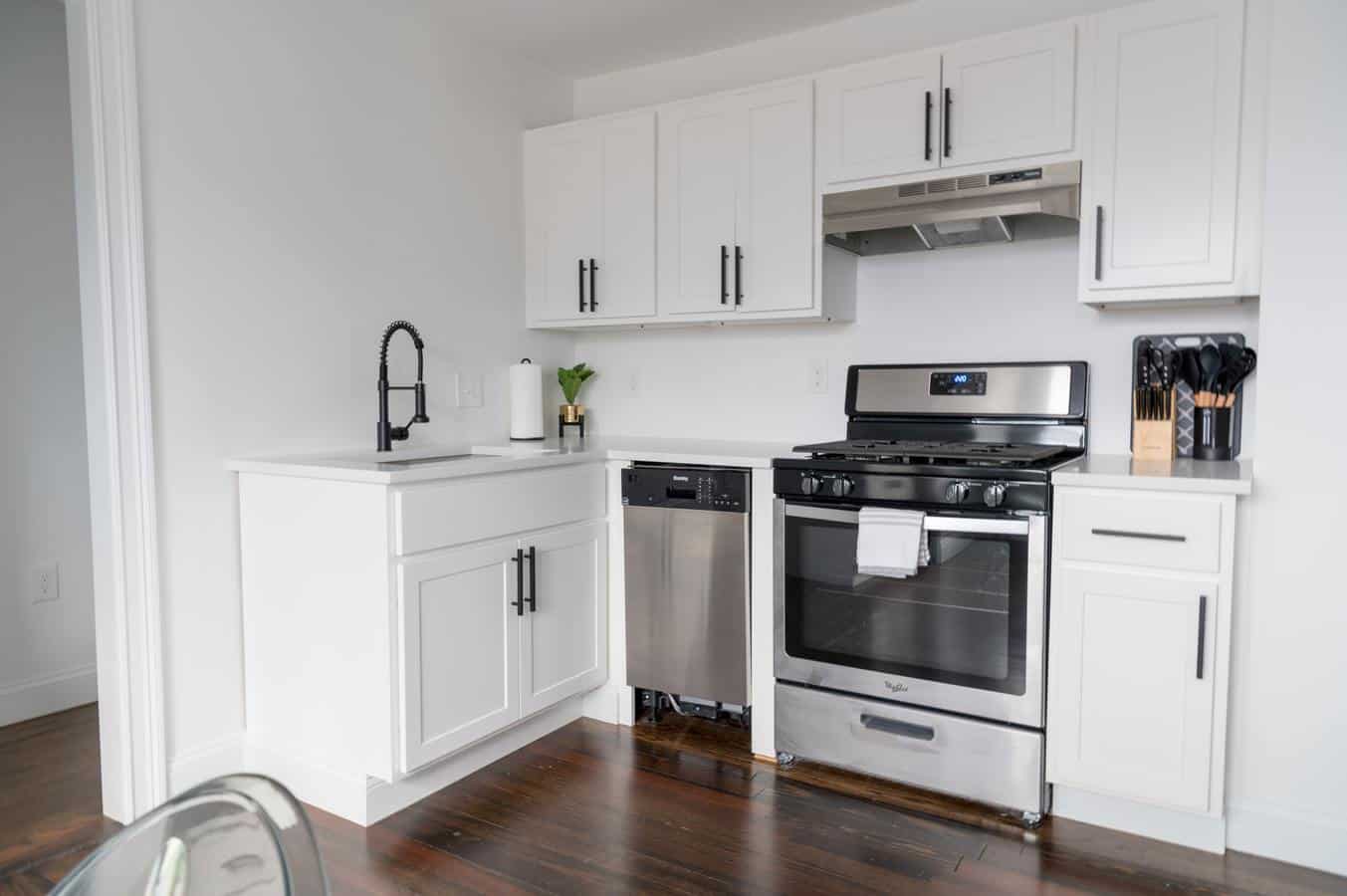Try as you might, oven racks will eventually collect a layer of built up grime and grease that is as unsightly as it is annoying to clean. But what’s the best way to get your oven racks spotless again?
The good news is, if you're trying to figure out how to clean your oven racks, you likely have everything you’ll need right in your kitchen.
In my quest to get my dull and dirty oven racks sparkling again, I tried four different methods to see what worked best. Before we take a look at what method worked best and why, let’s talk a bit about what products to use when you get to the oh so fun chore of cleaning your oven.

Harsh Chemicals or Natural Cleaning Agents?
When you think of cleaning off baked on grease and grime, it’s natural to think you’ll need harsh chemicals to get your oven racks shiny again.
While there's no shortage of oven cleaners on the market, you might find that the best method is a more natural approach. The best part is, you probably already have these natural ingredients in your pantry.
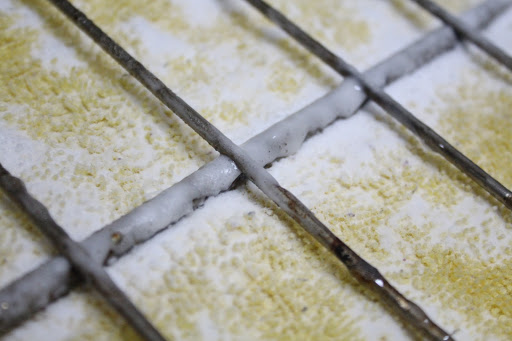
Working with common household ingredients like baking soda, vinegar, and dish soap can go a long way and even offer better solutions than harsh chemicals. You'll find this to be even more apparent even with tougher jobs like cleaning your toaster oven, countertops, stainless steel appliances, and even your floors.
For our guide on how to clean oven racks, we will look at both “clean” cleaning methods and methods that use harsher (but still natural) ingredients. We’ll also go over the pros and cons of each method so that you can decide what’s the best way to clean oven racks for your home.
How to Clean Oven Racks With Baking Soda
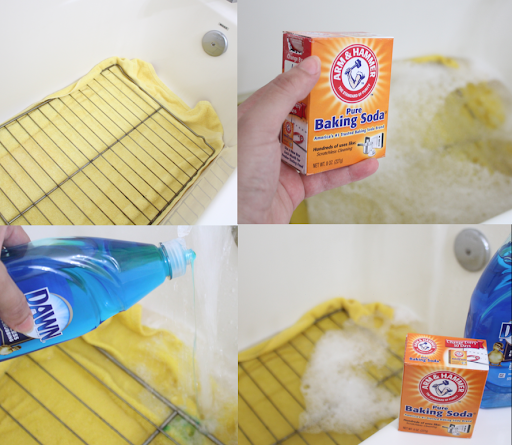
A baking soda solution is one of the most natural, yet effective ways to get rid of the built up grime and grease on your oven racks. To clean your oven racks with baking soda, all you need to do is create this simple solution and let your oven racks soak in it. Here’s how you’ll start:
- Place an old towel on the floor of your bathtub so as to protect your tub’s surface.
- Fill the tub with 3 to 4 inches of hot water.
- Add in 2 to 3 cups of baking soda to the water. If your tub is larger than a standard size tub, you will need to add in an extra ½ cup - 1 cup of baking soda. Gently swirl the solution to dissolve the baking soda.
- Scrape off any excess grime from your oven racks then submerge them into the water. Make sure that the water completely covers the oven racks.
- Soak your racks for at least eight hours. For the best results, soak the oven racks in the solution overnight. You do not need to switch out the water after it has cooled down.
- After your racks have soaked for at least eight hours, remove them and rinse and wipe them down. If there are still spots in your racks, you can use a scrubbing pad and baking soda to work out the remaining residue.
- Rinse your oven racks with clean water, dry them, and replace them back in your oven.
Pros/Cons of Cleaning Oven Racks with Baking Soda
This method is by far the most effective because you can give extra attention to the parts of your rack that need it. This method is not harsh on your racks and is not harmful to you. The only major downside is that it takes a bit of patience.
How to Clean Oven Racks with Vinegar and Baking Soda
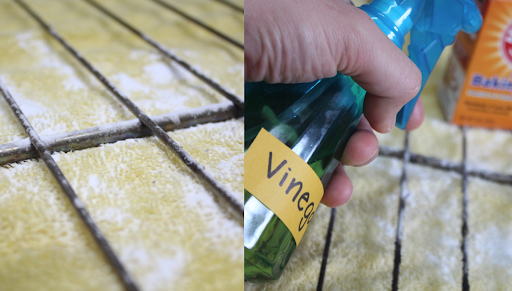
Vinegar can be an effective cleaning agent, especially when you use it alongside baking soda. If you want to clean your oven racks using vinegar, here’s what you’ll need to do:
- Start by laying an old towel down on your bathtub to keep it from getting damaged.
- Place your oven racks on the towel and sprinkle baking soda on the racks. Be sure to place the baking soda on the bottom of the rack as well.
- Next, spray a generous layer of vinegar over the baking soda covered racks. The vinegar will react with the baking soda and will start to foam up.
- Once the foaming stops, fill up your tub with hot water.
- Mix in ½ cup of dish soap (or ¾ cup of detergent) by letting it run under the faucet as you fill the tub.
- Let the hot water run until your oven racks are submerged completely.
- Let the rack sit in the water for at least eight hours or overnight before you rinse and dry them off.
Pros and Cons of Cleaning Oven Racks with Vinegar
I found this method to be effective as well, but not necessarily more or less than with baking soda alone. If anything, the addition of the vinegar helped to loosen up caked on grime beforehand, but that was primarily it.
How to Clean Oven Racks with Ammonia?
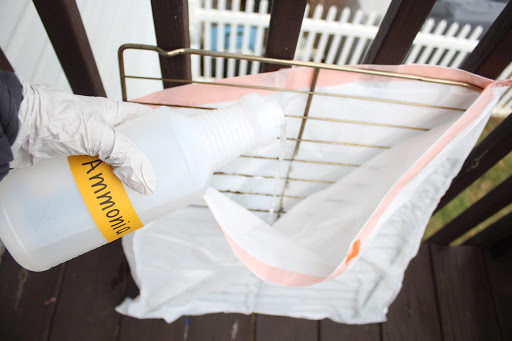
Ammonia is another effective natural cleaning agent. However, you do have to be precautious when using ammonia because of its strong smell.
You will want to use sudsy ammonia to clean your oven racks. Unlike clear household ammonia, sudsy ammonia includes soap which helps loosen up the caked on grime.
Here's how to make a homemade sudsy ammonia.
- Start by placing your oven racks in a large, heavy duty plastic bag.
- Pour in ¼ cup of the sudsy ammonia into the bag, then tie the bag so that no air can escape.
- Place the bag in an area of your home like a garage or backyard so that the bag is away from children and pets.
- After at least eight hours, or after letting it sit overnight, open the bag in a well ventilated area (the ammonia fumes will be strong). Put on rubber gloves and lay your oven racks down on an old towel or newspaper. Using a bristle brush, scrub away the grime.
- Rinse your racks, let them dry, and replace in your oven.
Pros and Cons of Cleaning Oven Racks With Ammonia
This method was certainly more time consuming than other methods, but it was effective in helping remove grime. The only major downside is you need to work in a well ventilated area because the fumes were a bit overpowering. This might not be the best method if you have young kids in the home.
How to Clean Oven Racks with Foil

This next method sounds a bit strange, but it may be a good method for you if you want to bring back the shine to your oven racks.
- Individually wrap your oven racks in aluminum foil.
- Place the wrapped racks in a bathtub and fill the tub with hot water. As the water runs, mix in ½ cup of dish soap (or ¾ cup of detergent). Make sure the racks are completely submerged in the hot water.
- Let the racks soak in the water for 2 - 4 hours.
- After soaking, remove the racks, unwrap them, and scrub away any grime.
Pros and Cons of Cleaning Oven Racks with Foil
This method was the least effective, but it did help remove grease spots and stains. While I wouldn't recommend this method as the first line of defense, I would recommend cleaning your oven racks with foil as a sort of “after treatment” of one of the other methods listed above. This method could also be a great way to maintain your oven racks before they get too dirty.

FAQ on How to Clean Oven Racks
Can You Use Magic Eraser on Oven Racks?
Yes. A Magic Eraser can help lift away the dirt on your oven racks, but you will need a good amount of elbow grease.
How Do You Clean Discolored Oven Racks?
Sprinkle baking powder onto the discoloration and spray vinegar on top. Let the two ingredients sit on the discoloration for several minutes before you work it out with a bristle brush.
Can I Use Baking Powder to Clean Oven Racks?
Baking powder and baking soda share similar names but work very differently. Baking powder already has an acidic ingredient whereas baking soda will need an acidic ingredient, like vinegar, to be activated.
How Often Should I Clean My Oven Racks?
It's best to clean your oven racks once every three months. If you have a major spill in your oven, clean your racks as quickly as possible to keep the mess from caking on.
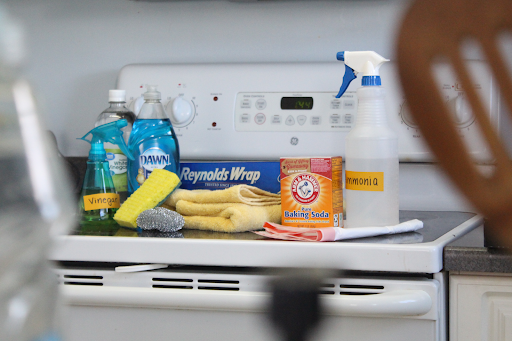
Concluding
Looking at the accumulated grime on your oven rack can be a little intimidating. We think you'll be surprised how effective a few cleaning ingredients can be when used properly.
If you have any questions/comments, don't hesitate to leave a note below.
Thanks 🙂
Nadia

